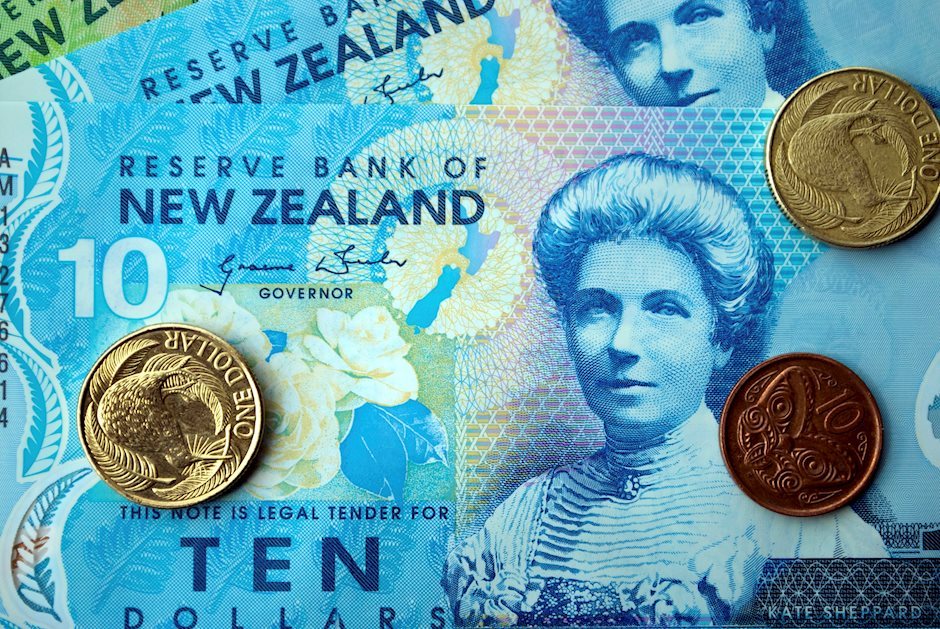NZD/USD attracts some sellers below 0.6000 as Trump trades climb
- NZD/USD faces some selling pressure to near 0.5970 in Wednesday’s Asian session, down 0.41% on the day.
- The USD edges higher as Trump trades continue to rally.
- New Zealand’s Unemployment Rate climbed to 4.8% in Q3 from 4.6% in Q2.

The NZD/USD pair attracts some sellers to around 0.5970 on Wednesday during the early Asian session. The US Dollar (USD) strengthens across the board as Trump trades climb. Investors will closely monitor the outcome of the US presidential election ahead of the US Federal Reserve (Fed) meeting.
Georgia is among the first states with available exit polls, indicating a favorable outcome for Trump. According to the Washington Post, Trump won around 10% more votes than Harris in the state, which has 16 electoral votes. Trump trades continue to rally as his odds improve. Analysts expect that the victory of Donald Trump could push the USD higher. Trump’s proposals to hike tariffs against major US trading partners would result in a stronger Greenback.
On the Kiwi front, data released by Statistics New Zealand on Wednesday showed that the country’s Unemployment Rate in the third quarter (Q3) climbed to 4.8% from 4.6% in the second quarter. The figure was below the market consensus of 5.0% in the reported period.
New Zealand’s economy contracted in the second quarter and is estimated to have shrunk further in the third quarter, triggering the Reserve Bank of New Zealand (RBNZ) to continue cutting interest rates to revive growth. The New Zealand central bank decided to cut the Official Cash Rate (OCR) by 75 basis points (bps) since it began an easing cycle in August. The markets expect another 50 bps cut at the final policy decision of the year on November 27, which would take the OCR to 4.25%.
New Zealand Dollar FAQs
The New Zealand Dollar (NZD), also known as the Kiwi, is a well-known traded currency among investors. Its value is broadly determined by the health of the New Zealand economy and the country’s central bank policy. Still, there are some unique particularities that also can make NZD move. The performance of the Chinese economy tends to move the Kiwi because China is New Zealand’s biggest trading partner. Bad news for the Chinese economy likely means less New Zealand exports to the country, hitting the economy and thus its currency. Another factor moving NZD is dairy prices as the dairy industry is New Zealand’s main export. High dairy prices boost export income, contributing positively to the economy and thus to the NZD.
The Reserve Bank of New Zealand (RBNZ) aims to achieve and maintain an inflation rate between 1% and 3% over the medium term, with a focus to keep it near the 2% mid-point. To this end, the bank sets an appropriate level of interest rates. When inflation is too high, the RBNZ will increase interest rates to cool the economy, but the move will also make bond yields higher, increasing investors’ appeal to invest in the country and thus boosting NZD. On the contrary, lower interest rates tend to weaken NZD. The so-called rate differential, or how rates in New Zealand are or are expected to be compared to the ones set by the US Federal Reserve, can also play a key role in moving the NZD/USD pair.
Macroeconomic data releases in New Zealand are key to assess the state of the economy and can impact the New Zealand Dollar’s (NZD) valuation. A strong economy, based on high economic growth, low unemployment and high confidence is good for NZD. High economic growth attracts foreign investment and may encourage the Reserve Bank of New Zealand to increase interest rates, if this economic strength comes together with elevated inflation. Conversely, if economic data is weak, NZD is likely to depreciate.
The New Zealand Dollar (NZD) tends to strengthen during risk-on periods, or when investors perceive that broader market risks are low and are optimistic about growth. This tends to lead to a more favorable outlook for commodities and so-called ‘commodity currencies’ such as the Kiwi. Conversely, NZD tends to weaken at times of market turbulence or economic uncertainty as investors tend to sell higher-risk assets and flee to the more-stable safe havens.
Author

Lallalit Srijandorn
FXStreet
Lallalit Srijandorn is a Parisian at heart. She has lived in France since 2019 and now becomes a digital entrepreneur based in Paris and Bangkok.

















